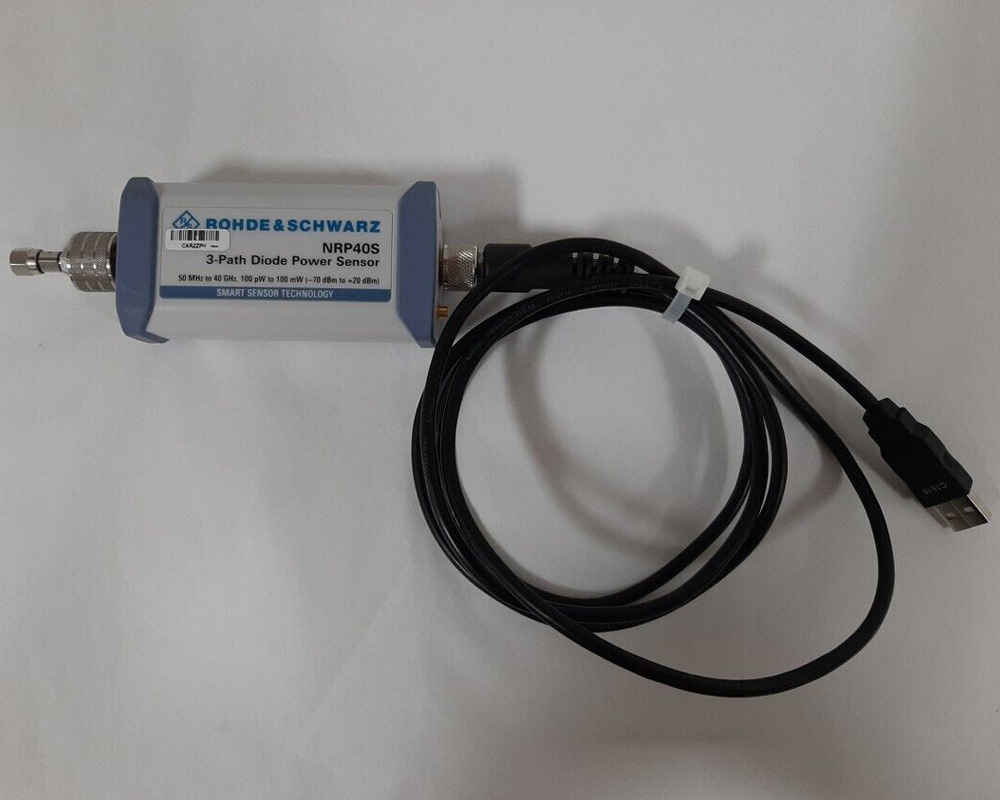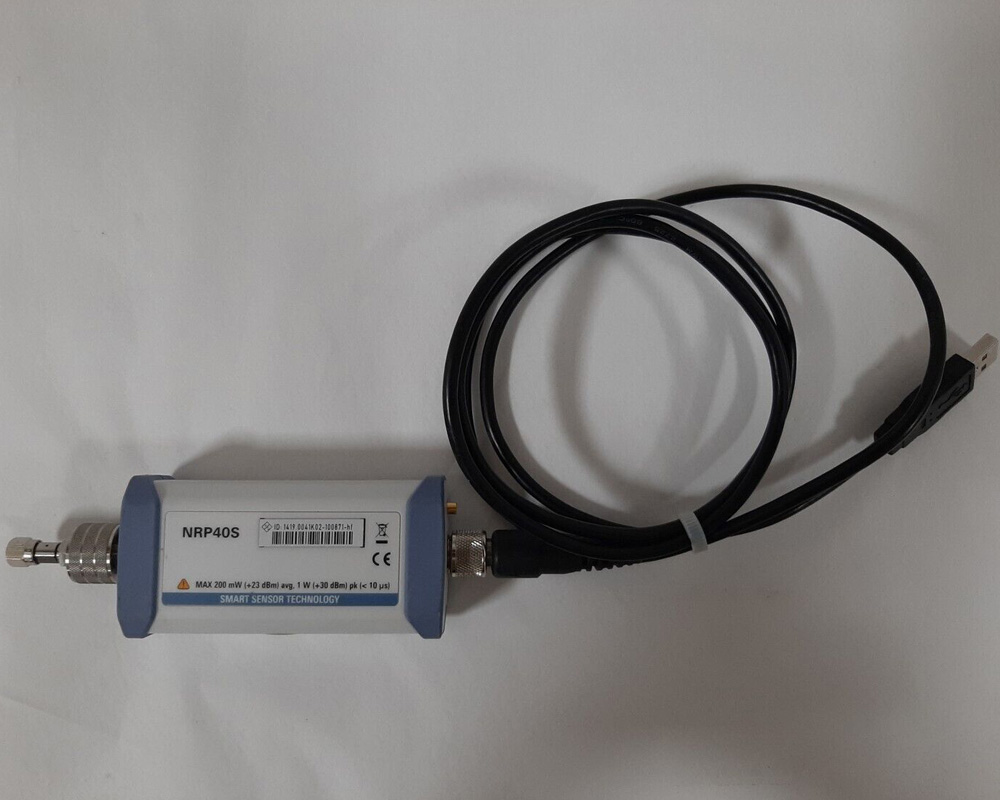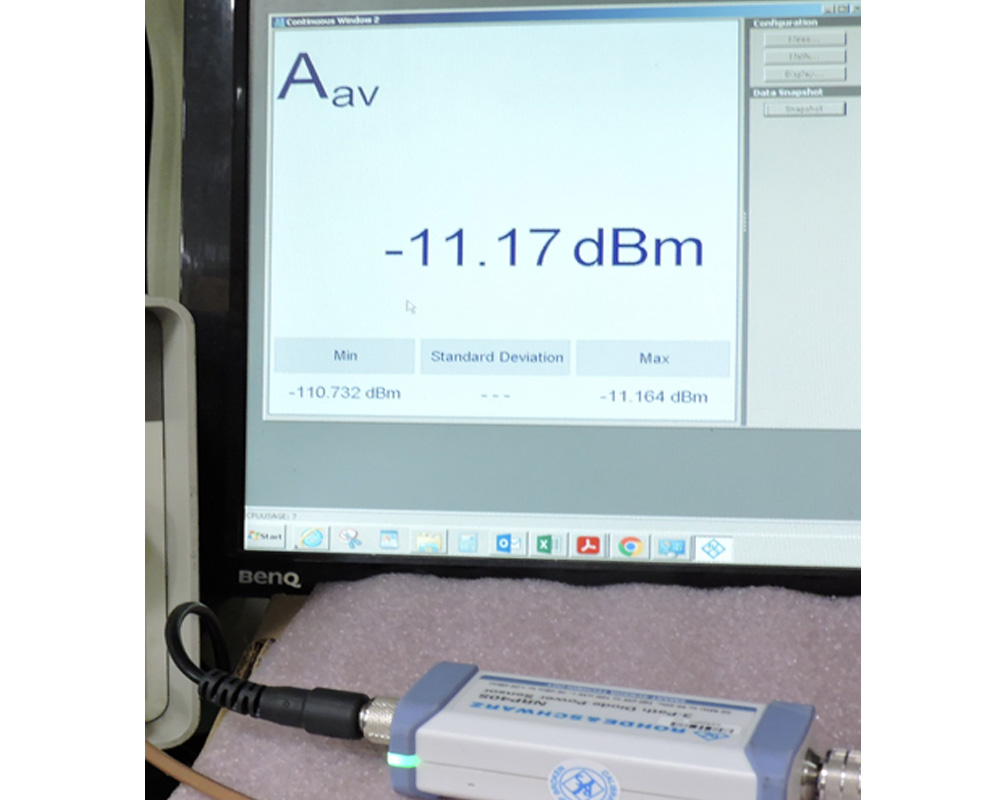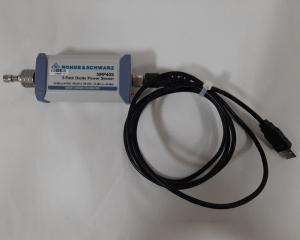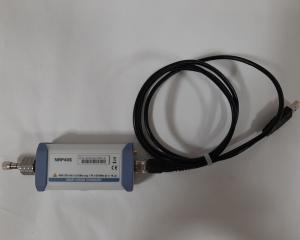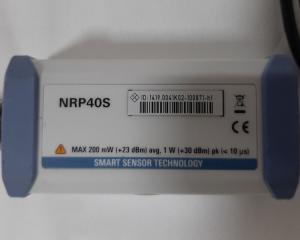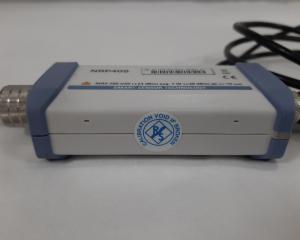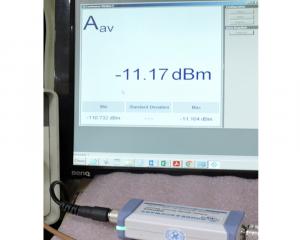Rohde & Schwarz NRP40S Diode Power Sensors
Sell with price US$ 2200 Rohde & Schwarz NRP40S Diode Power Sensors, 50 MHz - 40 GHz, Seller refurbished (used for tested).Up for sale Rohde & Schwarz NRP40S Three-Path Diode Power Sensors, 50 MHz - 40 GHz, Seller refurbished, clean, used just for tested and good working conditions.
Rohde & Schwarz NRP40S Specifications
| Frequency range | 50 MHz to 40 GH | ||||||||||||||||||||||||||||||||||||||||
| Impedance matching (SWR) |
|
||||||||||||||||||||||||||||||||||||||||
| Power measurement range |
|
||||||||||||||||||||||||||||||||||||||||
| Maximum power |
|
||||||||||||||||||||||||||||||||||||||||
| Measurement subranges |
|
||||||||||||||||||||||||||||||||||||||||
| Transition regions | (–20 ± 3) dBm to (–14 ± 3) dBm; (0 ± 3) dBm to (+6 ± 3) dBm | ||||||||||||||||||||||||||||||||||||||||
| Dynamic response |
|
||||||||||||||||||||||||||||||||||||||||
| Acquisition |
|
||||||||||||||||||||||||||||||||||||||||
| Internal Triggering | Threshold level range: –38 dBm to +20 dBm Threshold level accuracy: Identical to uncertainty for absolute power measurements Threshold level hysteresis: 0 dB to 10 dB Dropout: 4 0 s to 10 s |
||||||||||||||||||||||||||||||||||||||||
| External Triggering | EXTernal-1: R&S NRX/NRP2 or R&S NRP-Z5 EXTernal-2: coaxial trigger I/O
|
||||||||||||||||||||||||||||||||||||||||
| Zero offset |
|
||||||||||||||||||||||||||||||||||||||||
| Zero drift |
|
||||||||||||||||||||||||||||||||||||||||
| Measurement noise |
|
Specifications with limits
Represent warranted product performance by means of a range of values for the specified parameter. These specifications are marked with limiting symbols such as <, ≤, >, ≥, ±, or descriptions such as maximum, limit of, minimum. Compliance is ensured by testing or is derived from the design. Test limits are narrowed by guard bands to take into account measurement uncertainties, drift and aging, if applicable.
Specifications without limits
Represent warranted product performance for the specified parameter. These specifications are not specially marked and represent values with no or negligible deviations from the given value (e.g. dimensions or resolution of a setting parameter). Compliance is ensured by design.
Nominal values (nom.)
Characterize product performance by means of a representative value for the given parameter (e.g. nominal impedance). In contrast to typical data, a statistical evaluation does not take place and the parameter is not tested during production.
Measured values (meas.)
Characterize expected product performance by means of measurement results gained from individual samples.
Uncertainties
Represent limits of measurement uncertainty for a given measurand. Uncertainty is defined with a coverage factor of 2 and has been calculated in line with the rules of the Guide to the Expression of Uncertainty in Measurement (GUM), taking into account
environmental conditions, aging, wear and tear.
